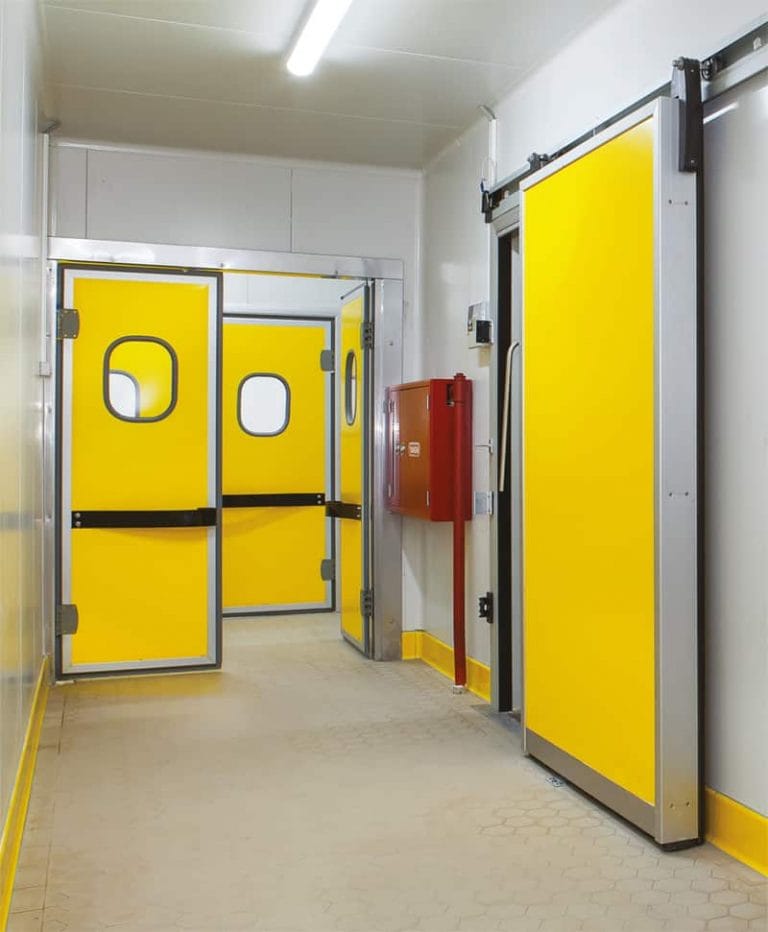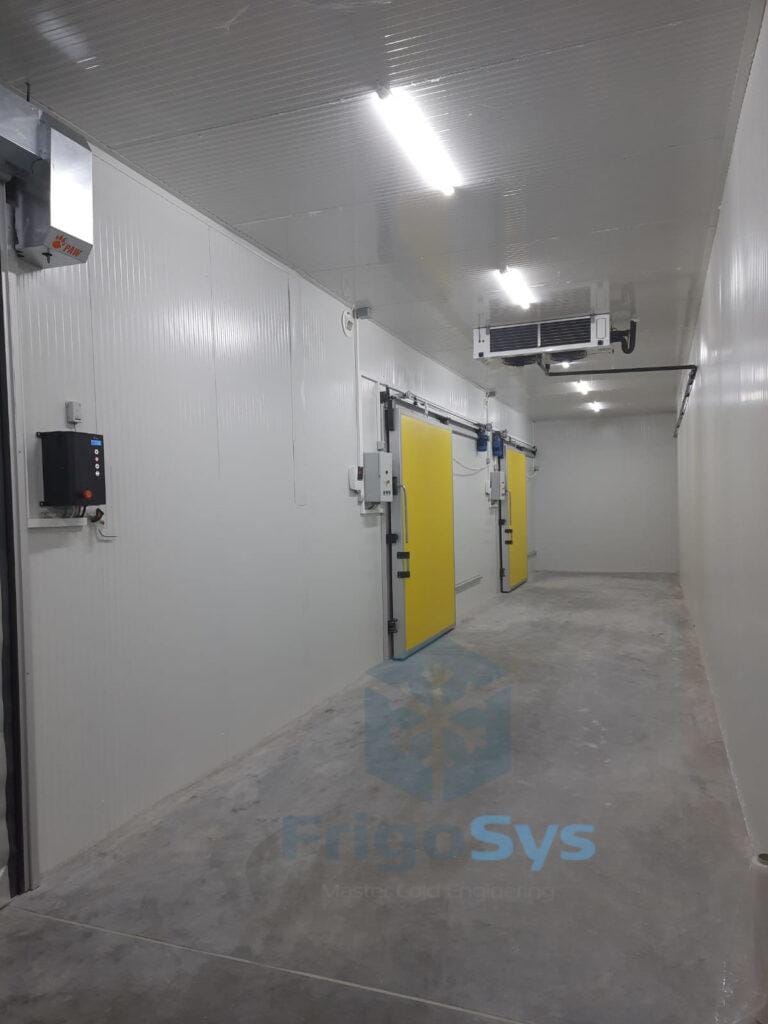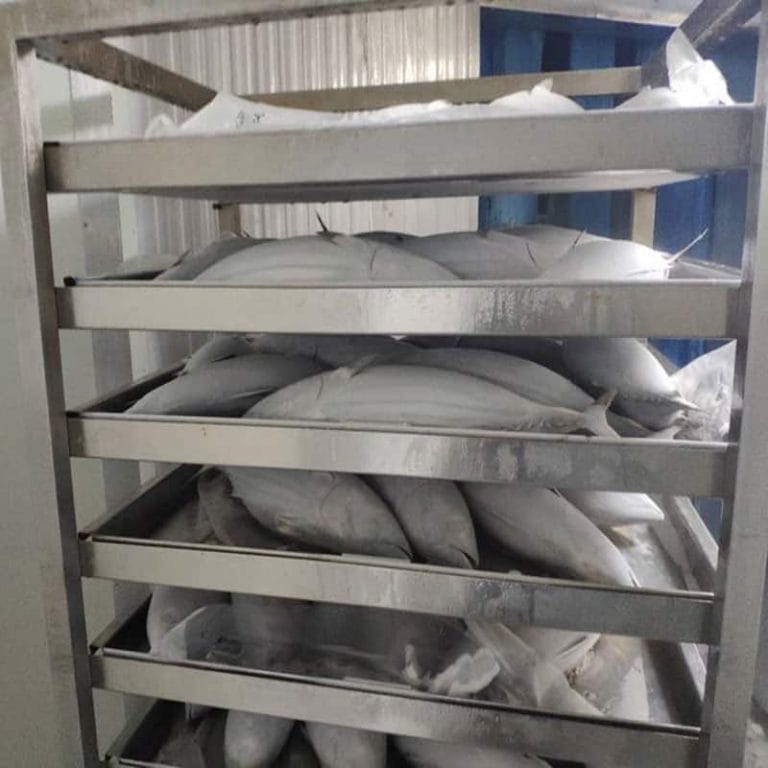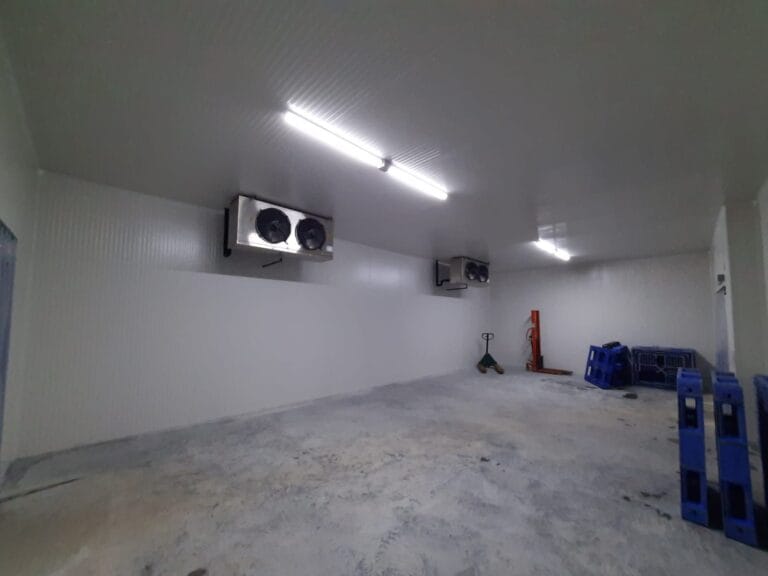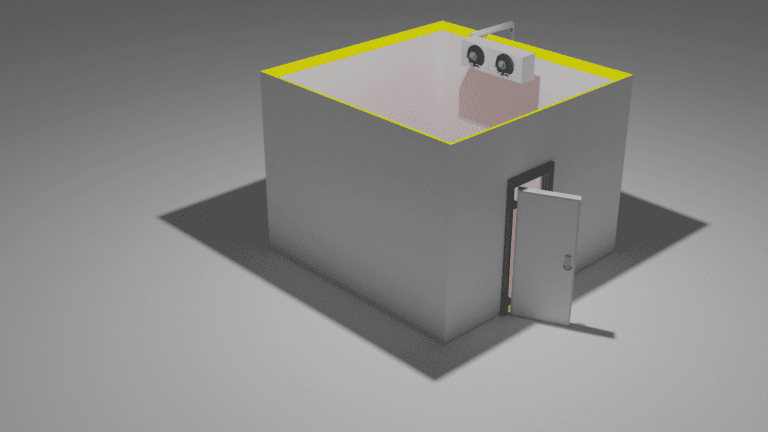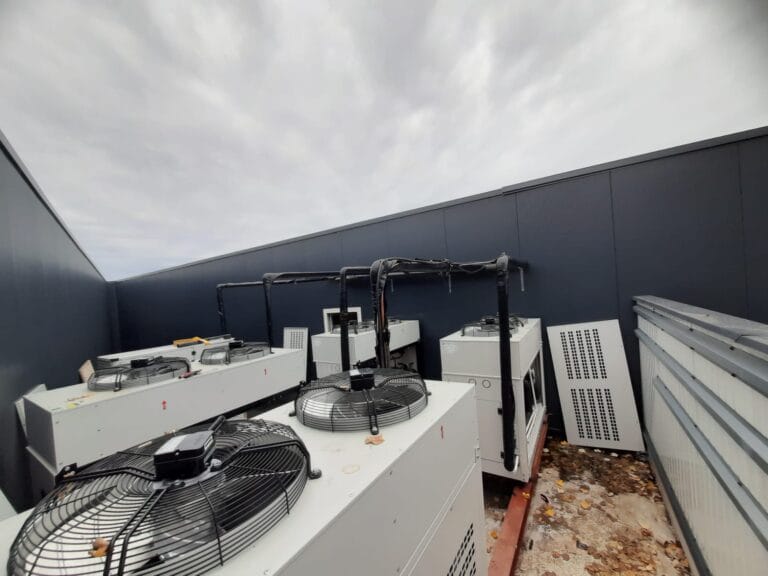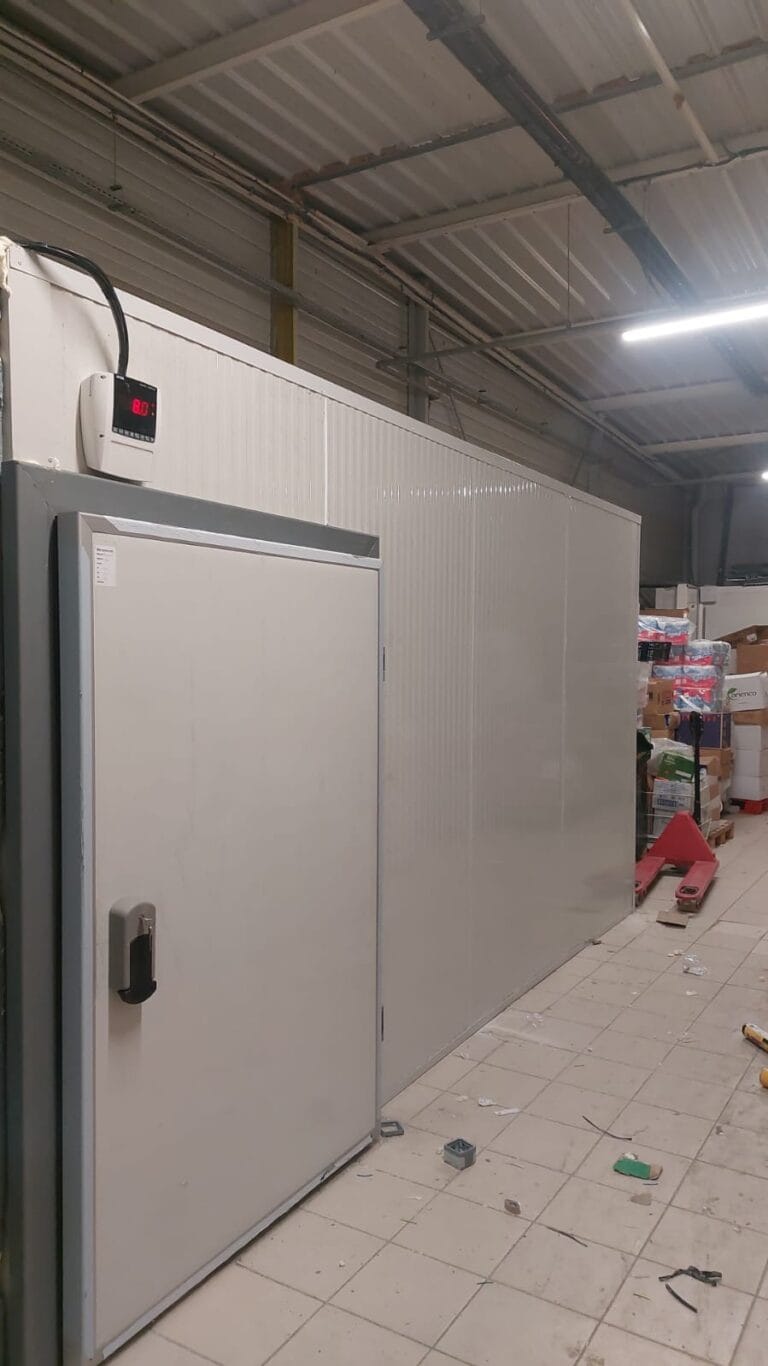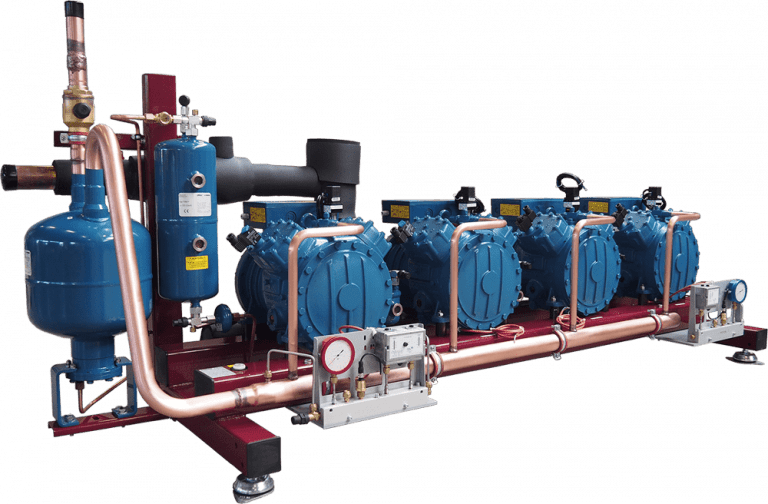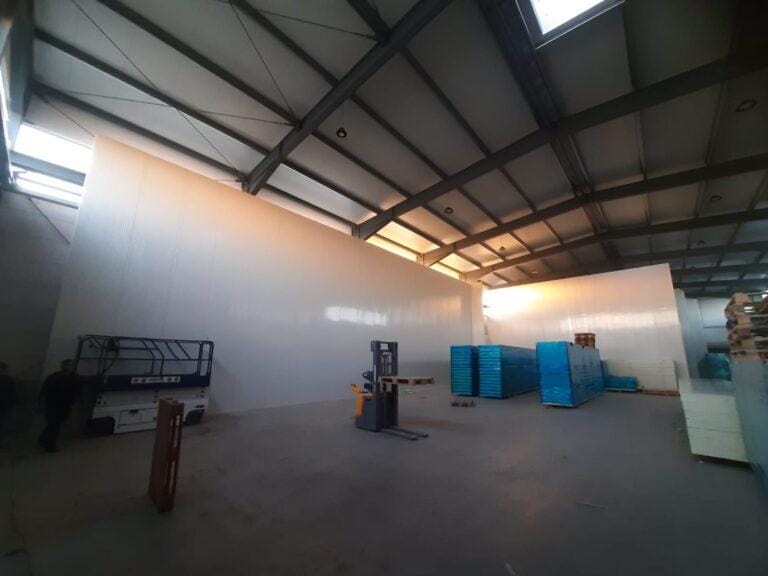A fresh fish cold room, also known as a fish cold storage or fish cold storage room, is a specialized refrigerated storage facility designed to preserve the freshness and quality of freshly caught or harvested fish. The cold room is maintained at low temperatures, usually just above the freezing point of water, to slow down bacterial growth and enzymatic reactions that can lead to spoilage.
Here’s how a fresh fish cold room typically works:
- Temperature control: The cold room is equipped with refrigeration systems that maintain a consistently low temperature, typically between -1°C to 4°C (30°F to 40°F). This temperature range is ideal for preserving fish without freezing them completely.
- Humidity control: Controlling humidity is essential to prevent the fish from drying out or becoming too moist. The humidity levels are maintained at a level that helps retain the fish’s natural moisture without causing spoilage.
- Hygiene and cleanliness: To ensure the fish remain fresh and uncontaminated, the cold room is kept clean, and proper sanitation practices are followed. This includes regular cleaning and disinfection to prevent the growth of harmful bacteria.
- Storage and organization: The fish are typically stored on racks or shelves in the cold room to allow for proper air circulation and even cooling. Proper organization helps manage inventory efficiently and reduces the risk of mishandling.
- Quick cooling: Freshly caught fish are perishable and can begin to spoil rapidly if not cooled quickly. Therefore, after being caught, fish are usually transported to the cold room as soon as possible to minimize any potential quality degradation.
- Extended shelf life: By maintaining the fish at low temperatures, the cold room extends the shelf life of the fish, allowing suppliers, distributors, and retailers to store the fish for an extended period before reaching the end consumer.
Fresh fish cold rooms play a vital role in the seafood industry, as they help ensure that consumers have access to high-quality, fresh fish year-round, even when fishing activity may fluctuate due to weather conditions or seasonal variations. Additionally, these cold storage facilities are essential for preserving fish during transportation from fishing boats or fish farms to various markets, reducing food waste and enhancing food safety.
